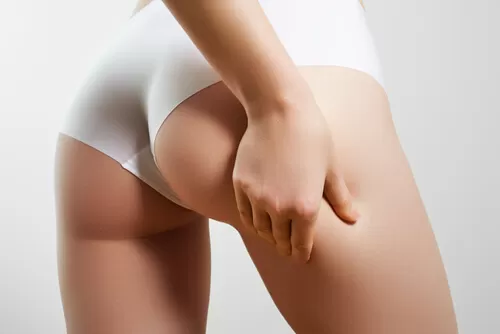


The first attempts in leg aesthetics started in bodybuilding athletes in the 70s. However, from those days until today, techniques, methods and applications in leg aesthetics have changed a lot. As skirt lengths shortened, the importance women gave to their legs began to increase. Although women who complain about their legs often try to cover their legs with pants, all women want to wear dresses and skirts.
Unhealthy nutrition in childhood, lack of appropriate sports and genetic factors can lead to aesthetic problems in the legs. The aim of leg aesthetics is to make the legs aesthetic, visual, harmonious and attractive. For this reason, tissue volume is reduced in excessive areas and additions are made to missing areas. In order to shape the leg, our primary preference in additions to missing areas is usually fat graft. Fat grafting is the reintroduction of fat tissue taken from the body with liposuction to the missing areas of the body after undergoing a special process. In conditions where fat grafting is not suitable, silicone prostheses or fillers can also be used. In leg aesthetics, if we do not take the fat tissue from the leg area, we usually take it from areas such as the abdomen, waist, hip, thigh and inner side of the knee and give it to the missing areas with very thin cannulas.
As with rhinoplasty or other aesthetic operations, leg aesthetic applications can be easily applied in different seasons as no special time frame is required when appropriate conditions are provided today.
The age of operation is recommended after 18 years for men and women for the full development of the mental, psychosocial and anatomical structure, except for congenital or acquired deformities such as injury, tissue defects.
Liposuction and laserlipo; fat in the legs most often occurs in the knees and inner thighs. By removing the fat in this area, the legs are longer and aesthetic visual appearance is provided. Thinning is performed with thin cannulas around the knee and ankle. Aesthetic leg form is achieved by adding the fats obtained by liposuction to the missing areas.
Fat transfer; It is primarily our first choice for curvature and contour disorders in the legs. Fat in the abdomen, waist and legs is transferred. Some of the fat given is lost over time, but the shape obtained in the legs with the remaining fat tissue is permanent. The operation time is approximately 1-1.5 hours.
Stem cell-rich fat transfer; Adipose tissue is an abundant source of stem cells and contains much more stem cells than bone marrow. Stem cell-rich fat transfer can give very good results in correcting mild curvatures in the leg.
Hyaluronic acid injection; It is applied to patients who have curvatures in their legs but do not have enough fat tissue in their body for fat injection. Lasts for about 1 year
Silicone leg prosthesis; These prostheses are placed in the leg with the help of a small incision made behind the knee and endoscopy. In this way, thin legs are provided with a thicker and slightly muscular appearance. Silicone leg prostheses are permanent. The operation time is approximately 1-1.5 hours. Aspirin, herbal teas, smoking and some painkillers should be avoided before the operation.
Recovery Process
After Laser Liposuction or Liposuction; The patient can usually return home the same day after the operation. The patient is recommended to stand less and lift his/her legs up during the first week. A special garment is worn to resolve edema, support tissues and accelerate healing. It is recommended to wear this garment for about 3 weeks after liposuction. The patient can usually return to work life after 5-7 days.
After fat transfer; It is discharged on the same day. A special corset is worn for 2 weeks. After 1 month, the patient can do active exercise other than running. 3.
After silicone prosthesis in the leg; hospital stay is one day, walking is not allowed for about 12 hours and compression stockings are worn for 3 weeks. Movement restriction is recommended for the first week. After 1 month, he/she can do sports except running. After 3 months, he can do all kinds of sports activities. It takes about 3 months to achieve the final appearance on the leg with silicone prosthesis application.
Ankle aesthetics
Thin ankles in women have been considered an indicator of elegance since ages. Thin legs and ankles that are proportional to the body structure are the dream of all women. Women with thicker ankles than normal also have difficulty finding suitable shoes and boots. However, thanks to ankle liposuction, excess fat tissue around the ankle is removed and the necessary thinning is achieved. However, if the bone is thick, thinning is not possible.
As a result of the doctor’s examination, it can be understood whether the patient is suitable for this operation.
In ankle aesthetics, asymmetries, contour disorders in the ankles are corrected or thicknesses are thinned to give an aesthetic, attractive form. When designing this area, the ankle is evaluated together with the area below the knee. If necessary, the area below the knee is thinned or fat is added in some places to achieve an aesthetic appearance.
This operation is performed with 3 mm thin cannulas. With the thin cannulas, the predetermined excess fat is removed. Some of this fat is also subjected to a special process if necessary and used by adding to the missing areas with 2 mm cannulas. This procedure can be performed under general anesthesia or sedation. The average duration of this procedure is 1 hour. After the operation, the patient can return home the same day, is put on his/her feet early and a special garment is worn on his/her legs for 3 weeks. At home, the patient is advised to put his/her feet up and not to stand for long periods of time. 3. Light exercises are allowed after the 6th week and heavy exercises after the 6th week. The results of this operation are permanent. Even if the patients gain weight, their ankles do not regain their former shape. However, in order to maintain the final shape, patients are recommended to watch their weight and do sports. We have been performing this operation frequently in recent years.
Cost of Leg Aesthetic Operation
Like many plastic surgery operations, the cost of leg aesthetics can vary in general. Apart from the training, experience and talent of the plastic surgeon, the location and service provided by the hospital where the operation will be performed, the cost of the device to be used in the operation, anesthesia, medications, special clothes after the operation and pre- and post-operative medical tests all affect the cost of this operation.




Copyright © 2025 Tüm Hakları Saklıdır.
SEO:
